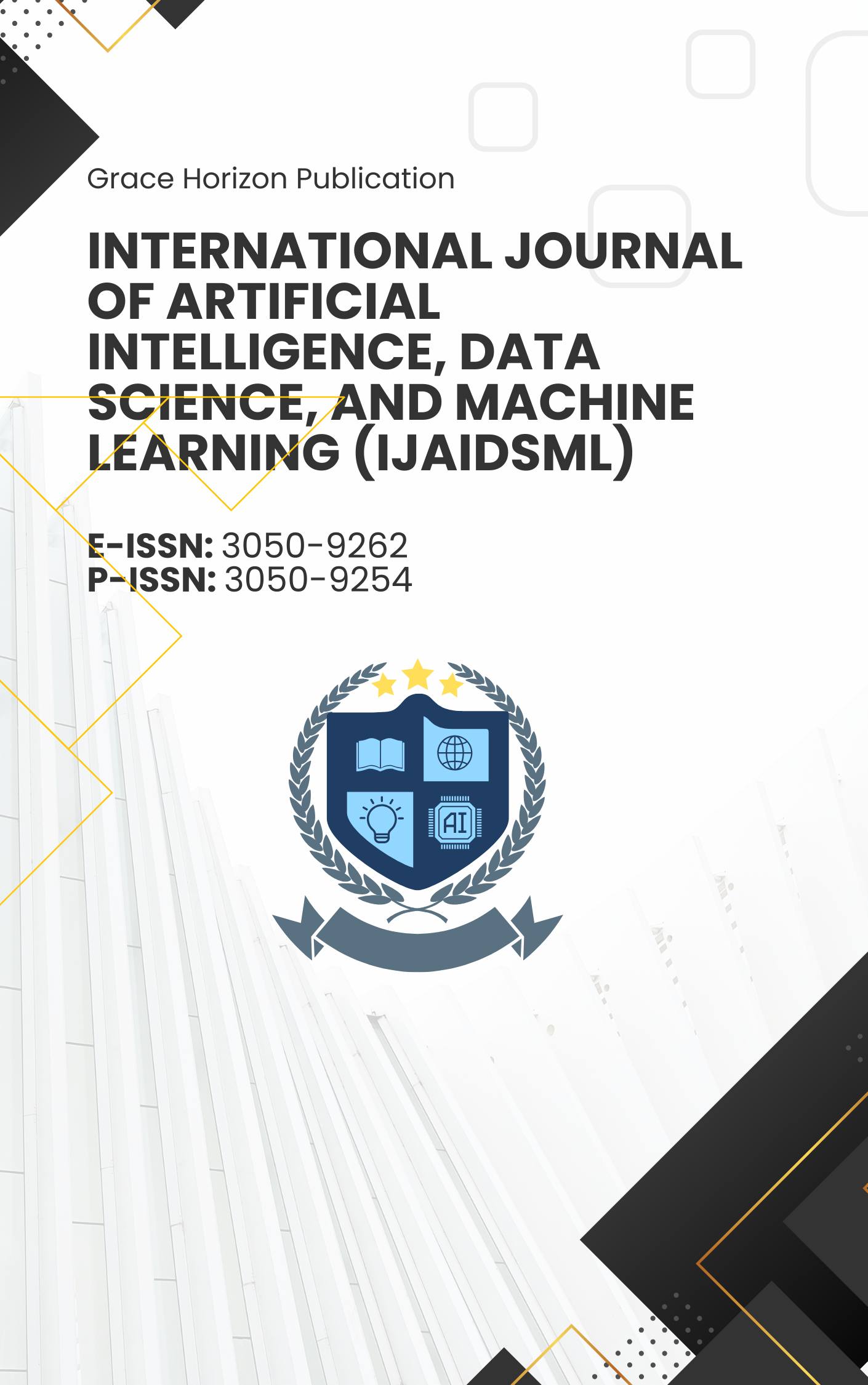Intelligent Optimization of LTE and 5G Networks Using AI and Machine Learning
DOI:
https://doi.org/10.63282/3050-9262.IJAIDSML-V6I3P104Keywords:
Artificial Intelligence, Machine Learning, Network Optimization, LTE, 5G NR, Self-Organizing Networks, Edge Intelligence, Deep Learning, Reinforcement Learning, Anomaly DetectionAbstract
The evolution of wireless networks from LTE to 5G NR and beyond has led to unprecedented complexity in architecture and operations. Artificial Intelligence (AI) and Machine Learning (ML) are at the forefront of this transformation, offering tools that can learn, adapt, and automate network optimization tasks. These techniques help solve real-time performance, load balancing, and fault detection challenges, leading to efficient resource utilization, reduced operational expenditure (OPEX), and improved user experience.[1] This paper reviews the integration of AI/ML across different layers of network architecture, including radio access, core, and edge, and outlines the current challenges and future directions for intelligent networking
References
[1] McKinsey & Company. (2020). The future of telecom operations.
[2] 3GPP TS 36.300, "Evolved Universal Terrestrial Radio Access (E-UTRA) and Evolved Universal Terrestrial Radio Access Network (E-UTRAN); Overall Description", v16.3.0, 2020.
[3] Ericsson. (2022). Ericsson Mobility Report, November 2022. https://www.ericsson.com/en/reports-and-papers/mobility-report
[4] Nokia. (2021). Self-Organizing Networks (SON) Powered by AI. https://www.nokia.com/networks/portfolio/son/
[5] Zhang, Y., et al. (2020). Machine learning-based anomaly detection for 5G mobile networks. IEEE Communications Magazine, 58(3), 62–68.
[6] Li, R., et al. (2017). Intelligent 5G: When Cellular Networks Meet Artificial Intelligence. IEEE Wireless Communications, 26(5), 76–83.
[7] ETSI GS ENI 005 V1.1.1 (2020). Experiential Networked Intelligence (ENI); System Architecture. GS/ENI-005(GS ENI 005 - V1.1.1 - Experiential Networked Intelligence (ENI); System Architecture)
[8] O-RAN Alliance. (2022). O-RAN Architecture Description v07.00.
[9] ITU AI for Good. https://aiforgood.itu.int/
[10] Biamonte, J., et al. (2017). Quantum machine learning. Nature, 549(7671), 195–202.
[11] NOOR, S., KALEEM, M., & AHMAD, N. (2011). Dissymetries and Radii of Gyrations of Cellulose Acetate by Light Sctattering Techniques. Journal of The Chemical Society of Pakistan, 3(4), 159.
[12] Sreekandan Nair , S. (2023). Digital Warfare: Cybersecurity Implications of the Russia-Ukraine Conflict. International Journal of Emerging Trends in Computer Science and Information Technology, 4(4), 31-40. https://doi.org/10.63282/7a3rq622
















